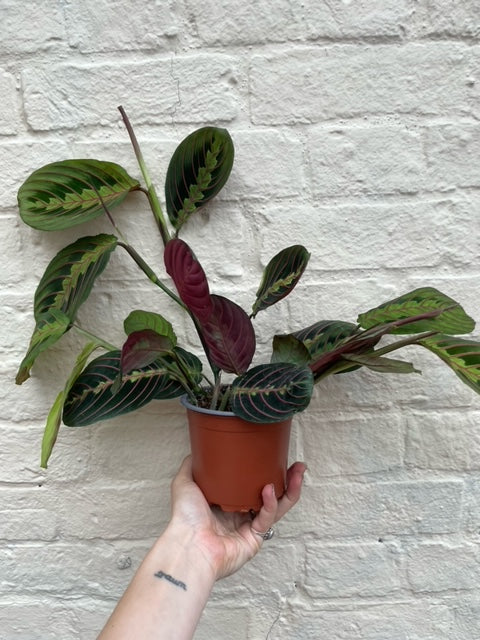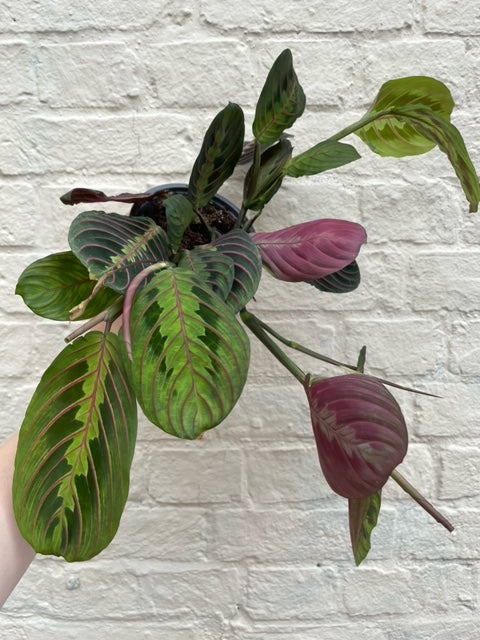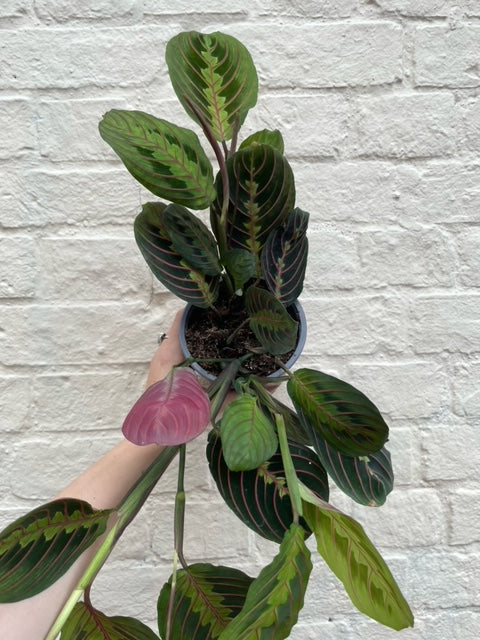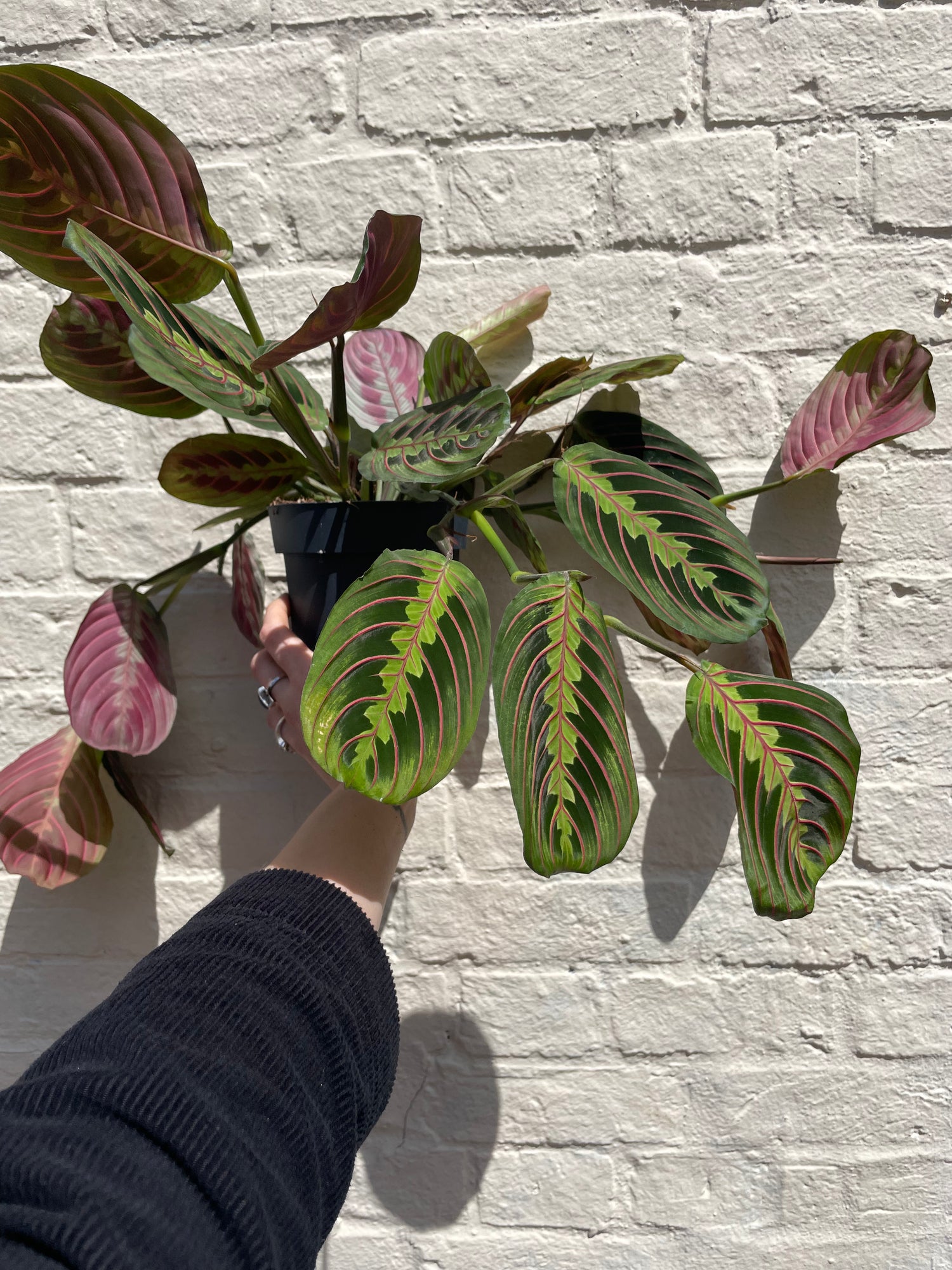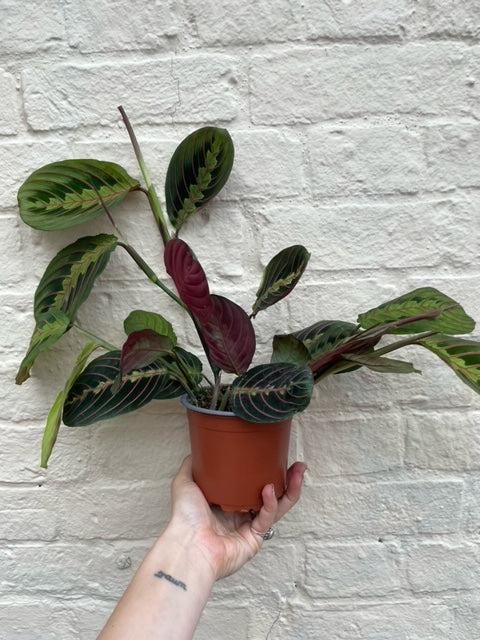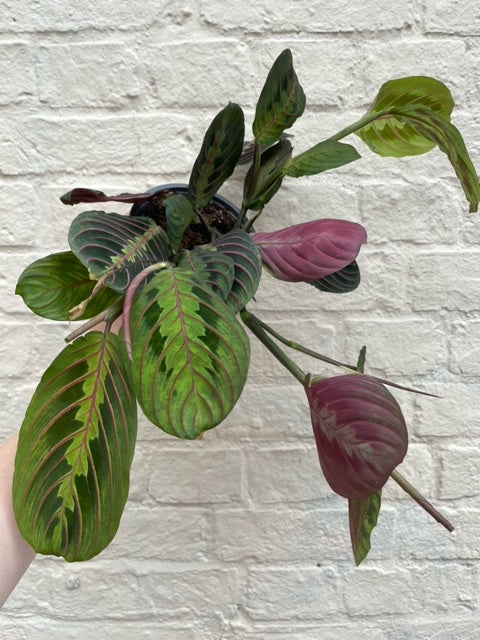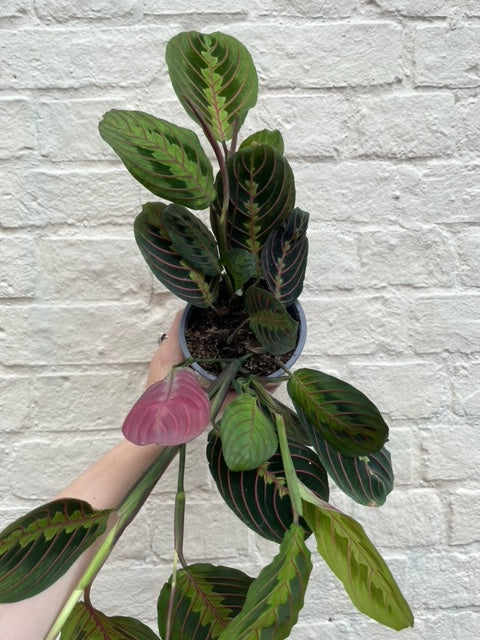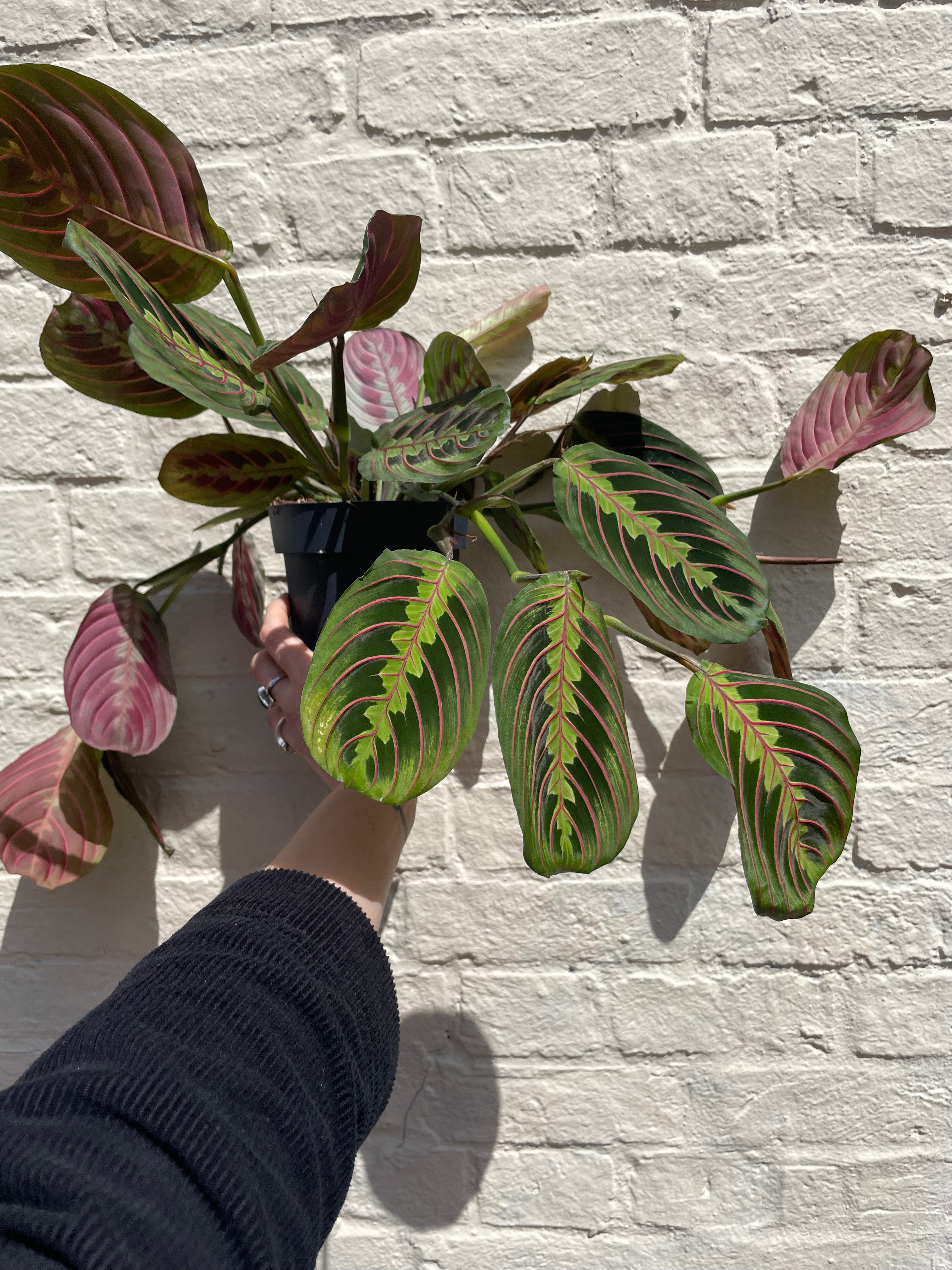The Maranta leuconeura or Prayer plant is one of our best selling houseplants. This particular variety of prayer plant ‘Fascinator’ boasts spectacular leaves with lime green edges, dark green splotches and prominent red veins.In this comprehensive guide, we'll walk you through everything you need to know to keep your Maranta healthy and thriving.
Prayer Plant Overview
Maranta leuconeura ‘Fascinator’ also known as a prayer plant and herringbone plant is native to the tropical rainforests of Brazil. These colourful beasts are great indoor houseplants and are very versatile! The green leaves of this plant are threaded with bright red veins, as well as attractively patterned along their midriff with yellow-green splotches. The true variety name is erythoneura, however, it is often sold under the name ‘Fascinator’. ‘Erythoneura’ refers to the Latin word erythroneurus which means red-veined. Not only does this plant have beautiful foliage, it is also known for its nyctinastic behaviour, which is where the leaves fold upwards at night, and is the reason for it being referred to as the ‘prayer plant’.
How to Look After a Maranta leuconeura ‘Fascinator’ (Prayer Plant / Herringbone plant)
Light requirements: Maranta leuconeura 'Fascinator’ prefers partial shade, colours will fade in bright light. Keep out of direct sunlight as this will scorch the leaves.
Watering: Water when the top inch of the soil is dry. Keep soil moist but not waterlogged, overwatering this plant can cause root rot. Try using room-temperature water so as not to shock the plant. The prayer plant prefers soft water.
Temperature and Humidity: Marantas love humidity. Increase the humidity by grouping plants together, using a humidifier, misting or placing them in a kitchen or bathroom. This plant doesn't like fluctuations in temperature, and prefers temperatures around 18°c.
Toxicity: Non-toxic to humans and pets.
Feeding: Apply a liquid fertiliser as directed during the growing season (spring and summer) but reduce it in winter. Follow the instructions on the fertiliser packaging for the dilution ratio.
Repotting: Likes to be repotted every two to three years. Use a plant pot one- two sizes bigger in diameter and make sure the pot has adequate drainage holes.

How to Repot a Prayer Plant:
When to Repot:
Prayer plants generally need repotting every 2 years, or when their roots become crowded and start circling the base of the pot, or growing out of the drainage holes. Spring is the best time to repot, as the plant is actively growing, try to avoid repotting plants in winter.
Selecting the Right Pot:
Choose a pot that is one or two sizes larger (this refers to the diameter of the plant pot, normally measured in centimeters, the pot size would therefore be around 1-2 cm wider) than the current one, ensuring it has drainage holes at the bottom. This allows excess water to escape, preventing waterlogged soil. You can always place your nursery pot in a decorative pot if you want to retain drainage but hide the plastic.
Repotting Process:
Carefully remove the prayer plant from its current pot, gently loosening the root ball. Place it in the new pot and add fresh, well-draining potting mix around the roots. Gently press the soil to ensure the roots are bedded in. Avoid pressing too hard on the soil as this can cause it to compact. Water the plant thoroughly after repotting.
How to Propagate a Prayer Plant
Propagating a Maranta is an exciting way to grow new plants. Follow these steps:
- Choose a Healthy Stem: Select a stem with a few leaves and nodes (small bumps on the stem where a leaf emerges).
- Cut the Stem: Use a clean, sharp knife or scissors to cut just below a node. Ensure your cutting is at least 6 inches (15 cm) long. Rooting: Place the cutting in water or moist soil. Roots should develop within a few weeks.
- Transplant: Once your cutting has well-established roots, transplant it into a pot with the appropriate soil mix.
Division Method:
- To propagate your prayer plant, divide it when repotting.
- Carefully separate the plant into smaller clumps, ensuring each division has roots and a few leaves.
- Plant these divisions in separate pots with fresh potting mix and cover with polythene/ clear plastic. Ensure they are kept somewhere warm until they are established.
- Provide the same care as you would for a mature prayer plant.
